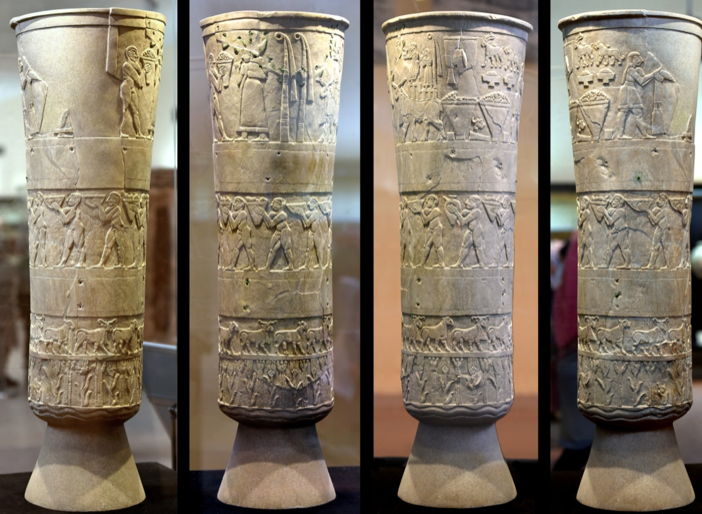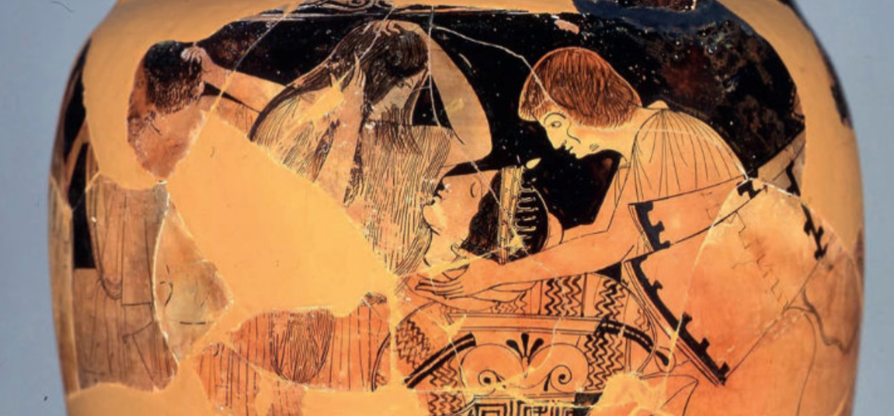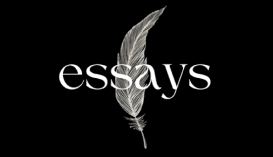Why is folklore so captivating? It seems to exert an almost magnetic pull on modern people, even though, at first glance, there’s nothing in it that directly speaks to our time.The answer is simple: folklore is infused with ancient rituals and beliefs that are deeply rooted in the human subconscious. Many of these customs and traditions go back thousands of years—thousands of years that bring us closer to the primal, almost primeval understanding of humanity and its connection to the world. To some extent, folklore and cultural traditions represent humanity’s first attempt to philosophically understand itself and its relationship with the world.
Marina Abramović’s recent performance Balkan Erotic Epic, presented in Manchester this autumn, is fascinating not only for the artist’s exploration of physicality, but also for its intricate mythological framework that inspired the work’s narrative.
For four hours, the audience witnessed the embodiment of thirteen myths from Balkan folklore, each infused with an unmistakable eroticism. And while the explicit scenes inevitably shock and capture attention, what truly matters is what lies beneath them, the mythological symbols reflecting how people once imagined the world and their place within it.
In this article, I will explore the origins of these myths to show how folklore can endure for millennia, continually transforming under the influence of different cultures, taking on curious new forms, and extending far beyond the boundaries of a single region or even an entire continent.
In Scaring the Gods
In one of Abramović’s performance scenes—Scaring the Gods—women bare their breasts to the sky to stop a storm. This is a nearly literal reference to a Balkan belief that a naked female chest can calm the tempest. The sacred gesture embodies the power of the feminine principle, capable of taming chaos.
This belief also has its mirror opposite, the pagan Balkan ritual of Dodola, where the “bride of the rain” (Dodola herself) undresses to summon rain and nourish the fertile earth. Its roots likely go back far earlier than the second millennium BCE, tracing to the Indo-European cult of the Mother Earth goddess and the Sky-Thunder god, symbolizing the union of earth and heaven that brings forth new life.
In ancient Greece, a similar ritual existed, the anasyrma. During it, women lifted their skirts to ward off evil spirits, dispel storms, or restore fertility. Interestingly, the famous cancan dance may be seen as a distant echo of anasyrma, perhaps explaining its enduring allure.
In some African tribes, such as the Yoruba and Ashanti, women also bared their chests to prevent storms and subdue chaos. This motif even appears in maritime traditions from ancient Greece to the Enlightenment era: the figure of a bare-breasted mermaid on a ship’s prow was believed to calm the seas—since the elements themselves were thought to fear female nudity.
Today, this ancient gesture takes on new meaning within feminism, as a symbol of freedom, self-respect, and inner strength.
Fertility Rite
Another widespread ritual is the fertility rite, during which men “fertilize” the soil before sowing, ensuring a bountiful harvest. Such practices appeared in the ancient Near East, Greece, India, and Central Africa long before they emerged in the Balkans.
For instance, Thorkild Jacobsen, an Assyriologist from the University of Copenhagen, described the Sumerian ritual of the sacred marriage between the earth goddess Inanna and the god of sowing, Dumuzi, who was often depicted as a shepherd. During the ceremony at the temple of Uruk, Inanna’s priestess would unite with the king, representing Dumuzi. The goal of the rite was to “plant the seed in the earth,” ensuring fertility, prosperity for the city, and longevity for the ruler. Needless to say, the ritual also held political significance – legitimizing royal power through the fertility of the land, but that’s another story.
Archaeological evidence of this ritual survives in the Warka Vase (c. 4th millennium BCE), discovered by a German expedition in Uruk (modern-day Warka). In its upper register, the god approaches the gates of his bride, the grain goddess Inanna, leading a procession bearing offerings.

Skeleton Orgy
This scene refers to another Balkan ritual, the “wedding with the dead.” It was performed when a bride or groom died before the wedding. A symbolic ceremony was held for them, complete with music, wreaths, and a feast. Sometimes the “bride of the dead” would wear a wedding dress and “sleep” beside the body.
References to the intertwining of marriage and funeral themes appear in the cultures of ancient Greece, Mesopotamia, Africa, and Latin America. In ancient Greece, for example, wedding and burial rituals strikingly overlapped.
In his work, Rush Rehm, Professor of Drama and Classics at Stanford University, compares these rituals and finds an almost uncanny resemblance: the ritual bathing of the bride mirrors the washing of the deceased; the bride’s wreath and veil parallel the funerary crown and shroud; in both ceremonies there is a bed, nuptial or funerary.
Young people who died before marriage were depicted as “brides of Hades,” and their graves were adorned with wedding symbols. Interestingly, this overlap between wedding and death rituals is reflected in Greek tragedy, where marriage often turns into death, as in Euripides’ Iphigenia in Aulis. In the story, Agamemnon summons his daughter Iphigenia under the pretense of marrying Achilles, but it is a trap: she must be sacrificed to Artemis so that the Achaean fleet can sail to Troy.
Archaeological evidence of this idea can be seen in loutrophoroi, vessels used for the ritual bathing of brides before the wedding, which later became funerary objects. These vases were placed on the graves of young people, often decorated with scenes of the groom taking the bride by the wrist.

This is only a brief list of references to the same ideas voiced by Abramović in Balkan Erotic Epic—the body as a ritual object, where eroticism is inseparably intertwined with the sacred. Here, folklore serves as a means of transmitting this knowledge, that has, perhaps invisibly, passed through space, time, and layers of culture.
Sometimes I feel that within all of us lies a kind of shared code, one that allows us to perceive the world, and ourselves within it, in similar ways. And the moment this code is unconsciously recognized, an inexplicable attraction arises toward the object that carries it, whether it’s a contemporary performance, the cancan, or a mermaid figure on an old ship’s prow.





















